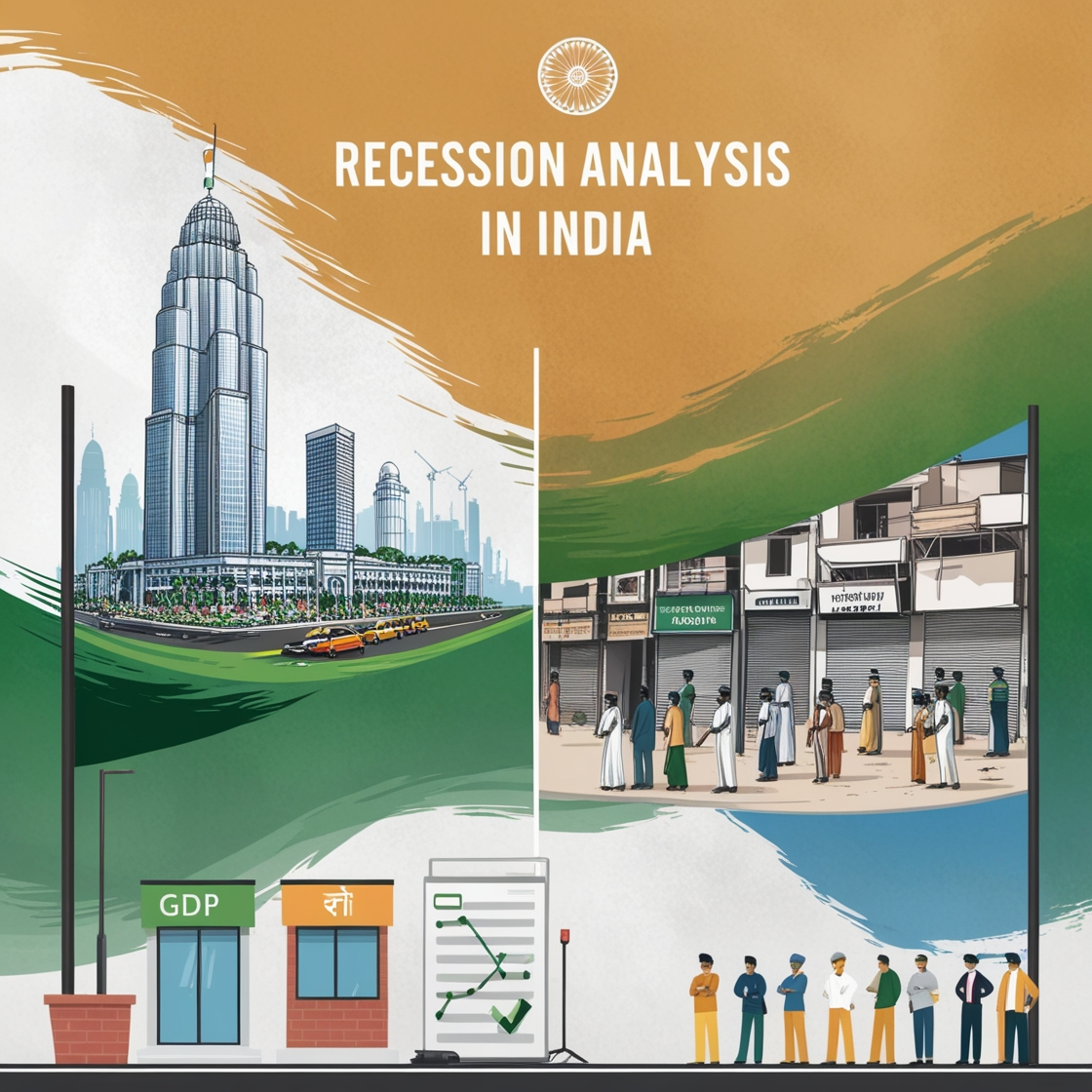The ongoing Covid-19 pandemic has gone down as one of the biggest global health emergencies,
firing a number at economies around the world.
In India, the consequences have been profound and wide-ranging as they were in no other instance to upend daily life styles along with economic activities. Strict lockdowns in a bid to combat the virus battered economic output, with virtually no sector spared.

1. Economic Contraction and GDP
The COVID-19 pandemic put a huge blow to the Indian economy. The nationwide lockdown that was imposed in March 2020 had brought a virtual halt to most of the economic activities. Consequently, GDP growth contracted by a huge 23.9% in Q1 FY2020-21 – sharpest fall since the start of quarterly numbers- in turn. It signalled a catastrophic drop in both production and demand as firms were shuttered, consumers stayed at home.
Current Economic Scenario in India
2. Impact on Key Sectors of Covid
a. Manufacturing and Industry
Pandemic crushed a lot of sectors including manufacturing sector. A shutdown of factories or partial operations was declared necessary as supply chains were disrupted, demand collapsed and labor availability became limited. The lockdown froze production lines, hit industrial output and inflicted great financial pain on enterprises in the sector.https://ourworldindata.org/coronavirus/country/india
b. Services Sector
The services sector (including tourism, hospitality and retail as well entertainment) suffered badly. The lockdown made the tourism and hospitality industries spring an individual leak.
However, with reduced footfall and subsequent operational challenges faced by retail businesses especially SMEs has a negative impact on their revenues and sustainability.
c. Agriculture
Interestingly, agriculture was among the few sectors that still showed some
resilience relative to other sectors and employment-intensive tactic in India.
The sector initially faced challenges arising from disrupttion in logistics and long farm labours
but recovered due to an average monsoon season combined with government support measures.
But unlike this, in the initial lockdown period there was a huge issue of farm produce market access and similar unavailability of agri-inputs kept thousands stranded between farms.
3. Employment and Labor Market in Covid-19.
This story was first published on Friday (04/09), the day India recorded its single-day peak in Covid-19 cases,
and consequently unleashed an unprecedented employment crisis against this backdrop of surging pandemic.
The lockdown resulted in tens of millions losing their jobs – numbers are particularly stark for the urban informal sector which makes up around 80% of the workforce.
The devastating effects were seen mostly on migrant day laborers,
who lost their source of income and had to travel back home.
Employment rate fell to its nadir, while the demand for jobs under Mahatma Gandhi National Rural Employment Guarantee Act (MGNREGA) shot through the roof as people started looking out.
In April 2020, the unemployment rate had reached a high of 23.5% according to data from CMIE (Center for Monitoring Indian Economy).https://www.worldometers.info/coronavirus/country/india/
4. Effect on Public Health and Healthcare Industry
The pandemic clearly exposed the weakness of Indian healthcare system. A sudden rash of COVID-19 cases left hospitals struggling with the demand, causing shortages of medical equipment beds and care staff. The administration started increasing healthcare infrastructure and speedup the testing capacity, with streamline vaccination drive.
5. Information About Digital and Tech Adoption in Covid-19
The development of some sectors accelerated during the pandemic, and one of these silver linings was digital transformation. Enterprises transitioned to Work from Home and saw an increased need for digital tools, platforms. The growth in overall fund flow for the e-commerce segment surged due to increase by consumer demand towards online shopping whether it may be essential and non-essential commodities.
6. Path to Recovery
Different measures that India can take for economic recovery are :
1.Vaccination Drive
In order to stop the spread of virus and recover normal economic activities, it is essential that a robust vaccination process takes place.
India is trying to roll out the vaccine campaign in their country for major demographic until mid-2021 which seems perfect with those two conditions.

2. Structural Reforms
The pandemic exposed the need for structural reforms to strengthen resilience and foster sustained growth. Critics say changes in labor laws, business regulations and fragmented health care facilities as well as digital infrastructure are key areas needing reform.
3. Government Support
Further government intervention, such as fiscal stimulus programs and targeted funding relief measures including those designed to encourage domestic manufacturing and exports will help drive economic recovery.
4. Consumer Confidence
The revival of demand would mean that consumer confidence is being restored. Here we need to combine the concerns for public health and financial security whilst also igniting market confidence.
Future trends in IoT Technology

In the blog, we present the future focus of IoT technology as 5G, edge computing, AI and ML, better security, and more.. It describes the approach towards solving interconnect, the idea of green architectures, utilization of the blockchain, and development of IoT on health solutions and smart, all the aspects of evolution of multiple domains.…
How Machine Learning Technology Evolved

The blog explores the genesis of the topic (Machine Learning ) that was developed along with other concepts such as that of a universal machine initially pioneered by Turing and McCarthy. It includes topics such as early algorithms like the Perceptron, the transition to statistical methods, new developments of deep learning, and different aspects influencing…
Focus on Specific Aspects of the Recession :

The current recession in India continues both domestic and global employment, consumer expenditure, SME business, and investment suffering. Higher inflation poses more problems to the economy and while the action taken by the government has merits they tend to lack the ability and capacity to solve deep structural problems. As we move through this downturn,…




Leave a Reply
You must be logged in to post a comment.